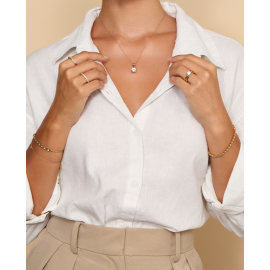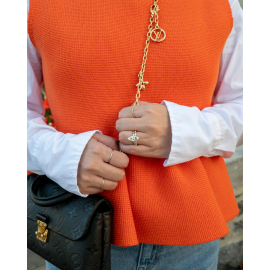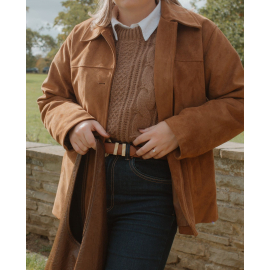Price match guarantee

We’ve teamed up with Klarna to provide flexible payment options, allowing you to shop the way you want. With Klarna, you can split your payment into 3 instalments or choose to pay later, making your shopping experience smoother and more convenient. Your order total must be between £100 and £499 to qualify.

We’ve teamed up with Klarna to provide flexible payment options, allowing you to shop the way you want. With Klarna, you can split your payment into 3 instalments or choose to pay later, making your shopping experience smoother and more convenient. Your order total must be between £100 and £499 to qualify.

March 28, 2017 | by Admin
It is law within the UK that every item of precious metal sold such as Platinum, Gold, Silver is stamped labelling the item with the type of metal it is. Platinum pieces which weigh less than 0.5 grams, 18ct Gold and Palladium pieces weighing less than 1.0 gram and Silver pieces weighing less than 7.78 grams are except from hallmark.
At Diamonds Factory all our products are hallmarked as per UK hallmarking law from London Assay Office (The GoldSmith Company)
The Goldsmiths' Company Assay Office is the oldest assay office in the United Kingdom. It has provided hallmarking services since The Goldsmiths' Company was founded in the 1300s. The company received its royal charter in 1327 and ranks 5th in order of precedence of the 12 Great Livery Companies of the City of London.
Hallmarking dates back to the 1300s when Edward I of England passed a law requiring any item made of silver, which was offered for sale, to be at least of equal quality as that of the coin of the realm (silver currency). The wardens of The Goldsmiths' Company were tasked with visiting workshops in the City of London to assay (test) silver articles. If these articles were found to be below standard they were originally destroyed and the metal forfeited to the King. If they passed, each article received the King's mark of authentication - the mark of a leopard's head. By 1478, there were several hundred workshops and merchants manufacturing silver articles in the City of London. It was not possible for the wardens to visit them all so the merchants were ordered to bring their items to Goldsmiths' Hall for testing and marking and a permanent Assay Office was established in the building. This is the origin of the term hallmark - struck with the King's mark at Goldsmiths' Hall.
In 1544 the Goldsmith's Company adopted the King's mark as their town mark and the mark of the leopard's head is now internationally recognised as the mark of this assay office.
The Goldsmiths's Company Assay Office is still based at Goldsmiths's Hall and remains the oldest company in Britain to be continually trading from the same site. However, it also has two satellite offices; at Greville Street in Hatton Garden in the heart of the London jewellery quarter and within a high security complex near London's Heathrow airport. It now has a new off-site facility within the Dalston-based jewellery manufacturer, Allied Gold. This is the first time in the Assay Office's 700 year history that it has opened permanent hallmarking services on a customer's premises.
In addition to hallmarking, the office has now expanded its range of services to support the jewellery trade and enforcement authorities. It offers a variety of specialist analytical services including nickel, lead & cadmium testing, antique silver dating, non-destructive compositional analysis, plating thickness measurement and a melt and assay service for scrap precious metal carried out in their fully independent on-site laboratory. Other services offered are a jewellery valuation service, laser marking, trading standards assistance, high quality photography and a comprehensive range of training and educational seminars, lectures and specialist events.






Rare, glamorous but also a little unusual; black diamonds are now regularly sought after when choosing the perfect engagement or eternity ring. Perhaps we should thank fashionista Carrie Bradshaw - Sarah Jessica Parker’s character in hit TV show Sex and the City - for the resurgence in popularity for black diamonds, after Mr Big presented her with a stunning engagement ring featuring a five-carat black diamond.
These unique stones are a true talking point for any piece of jewellery and the kind of embellishment that makes an impression. They also complement any choice of gold colour, whether you opt for an on-trend rose shade or classic white.
Are black diamonds naturally formed?
Black diamonds can be found naturally but are very rare, therefore the more affordable options on the market are a product of enhancement via irradiation – a treatment that uses radiation to change the colour of a diamond. This treatment forces the stone’s colour to darken and to the naked eye it appears to be black.
A natural black diamond is simply a white diamond that gets its colour from the vast amount of inclusions that are spread throughout the stone. These are the imperfections most people purchasing diamonds attempt to avoid!
There is speculation around the origin of black diamonds and how they are created, with some geologists suggesting they are actually from meteorites hitting the Earth. Others confirm they derive from a similar process to regular diamonds, created from high pressure conditions within the Earth. Natural black diamonds are usually found in South America, Brazil, Australia and Central Africa.
What to look for in a black diamond
A reflective, mirror-like quality is important when considering a black diamond, with no chips or imperfections on the surface of the stone. A black diamond should also be polished and its colour evenly distributed throughout the stone. However, because they are so heavily included (featuring lots of flaws) they can be difficult to cut and when placing them in settings jewellers must be very careful.
Due to their limited availability, natural black diamonds are usually more expensive than their original white counterparts, which is why enhanced black diamonds are generally featured more in jewellery. An enhanced black diamond may appear to be a very dark grey in certain lighting and some can even appear dark green. However, they still look just as incredible and are much more affordable, perfect for everything from a ring to a necklace pendant.
Bear in mind that a one carat black diamond will usually be smaller than a one carat white diamond.
How to care for a black diamond
Due to the amount of fractures and flaws within a black diamond they are actually more vulnerable to cracking and damage. Therefore, you should never place a piece of jewellery featuring black diamonds in an ultrasonic cleaner or a steamer to clean it. Instead, a soft clean toothbrush and warm water is best to get dirt and grime out from under the diamond and the prongs it is set in.
Are you looking for black diamond jewellery? Then don’t hesitate to browse our stunning range of enhanced black diamond rings, earrings and pendants here on the site.